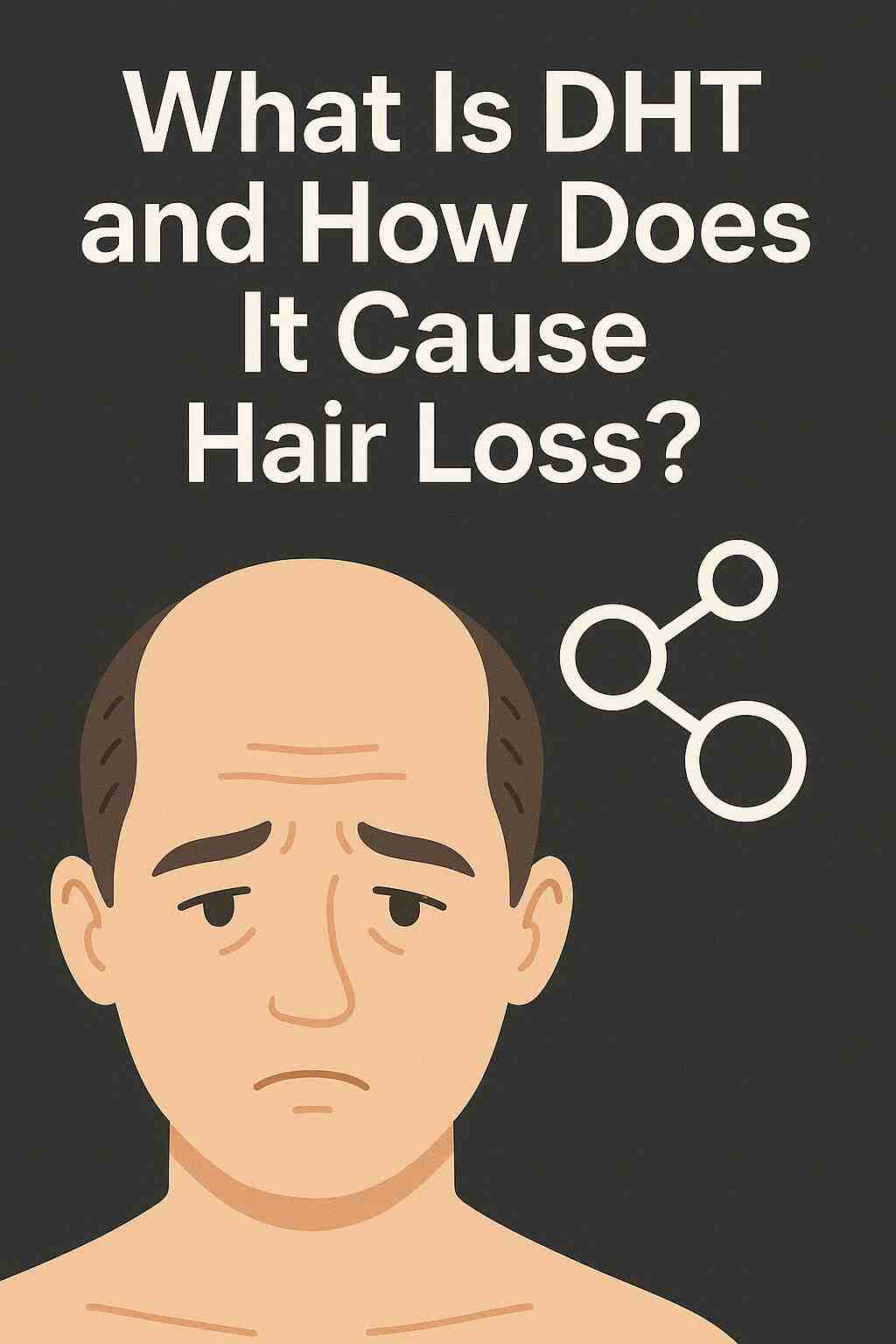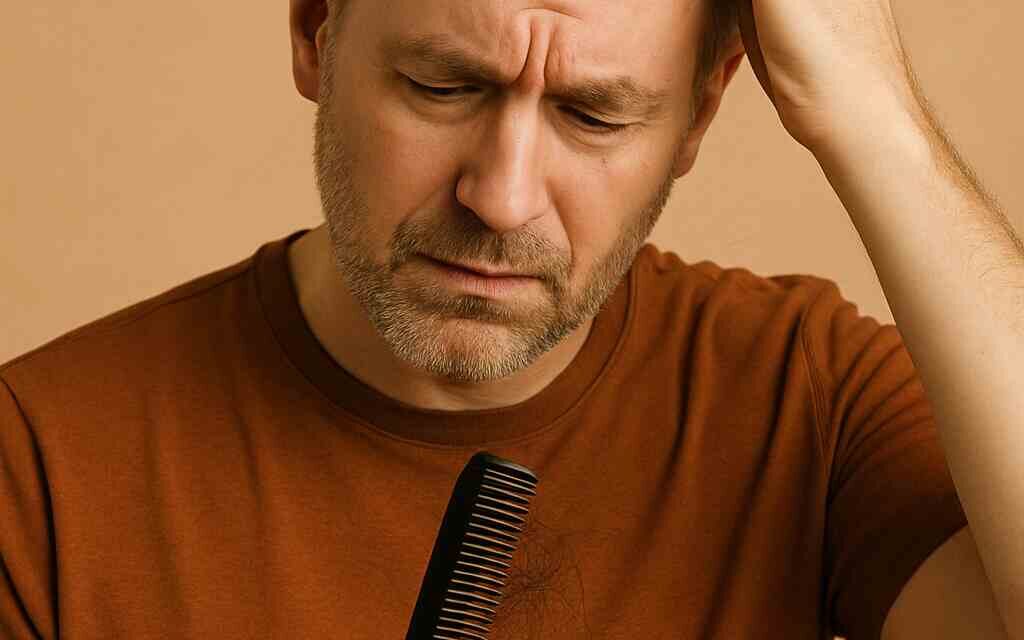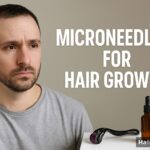Understanding the Role of DHT in Hair Loss
The Impact of DHT on Hair Health
Discover how DHT contributes to hair thinning and loss, and explore ways to manage its effects.
What is DHT?
If you’ve been researching hair loss, you’ve probably come across the term DHT. But what is DHT, and how exactly DHT and hair loss leads to thinning or baldness in men and women?
DHT, or dihydrotestosterone, is an androgen hormone derived from testosterone. It plays a key role in male puberty—deepening the voice, increasing muscle mass, and stimulating body hair growth. However, while DHT is helpful in early development, it can be harmful to your hair later in life.

DHT Hair loss, how does it Cause Hair Loss?
-
DHT Production
Testosterone is converted into DHT via the enzyme 5-alpha reductase. -
Follicle Miniaturization
DHT binds to receptors in the scalp, shrinking the follicles. -
Hair Thinning and Loss
Over time, hairs become finer, growth slows, and new hair stops forming.
In people genetically sensitive to DHT, the hormone binds to androgen receptors in hair follicles—especially those on the scalp. This causes follicle miniaturization: the hair shaft becomes thinner, shorter, and weaker. Eventually, the follicle stops producing new hair altogether, leading to permanent loss. This process is called androgenetic alopecia.
This is the most common form of hair loss, affecting:
-
80% of men at some point in their lives
-
Up to 50% of women, often as diffuse thinning on the crown
%
Affected Men
%
Affected Women
So, how do we stop DHT from ruining our hair? There are several ways to block or reduce the effects of DHT:
Finasteride is the most well-known DHT-blocking drug. It inhibits the 5-alpha reductase enzyme, reducing DHT levels in the scalp. Studies show it can significantly slow hair loss and promote regrowth in men (sold as Propecia).
Not typically prescribed for women unless under medical supervision.
Topical Treatments:
Products like topical minoxidil don’t block DHT, but they improve blood flow and help hair follicles resist miniaturization. Combining this with a DHT blocker may yield better results.
Natural DHT Inhibitors:
Ingredients like saw palmetto, pumpkin seed oil, and green tea extract are commonly found in DHT-blocking shampoos and supplements. Learn more in our guide: Top Natural DHT Blockers Backed by Science.
Shampoos:
These often contain ketoconazole, caffeine, or biotin, and can help reduce scalp DHT when used consistently.
See our picks in Best Shampoos for DHT-Related Hair Loss.

It’s important to understand that not everyone responds to DHT the same way. Two people with the same hormone levels may have very different hair outcomes, due to differences in genetics, scalp sensitivity, and even lifestyle.
Speaking of lifestyle, high levels of stress, poor nutrition, and lack of sleep may worsen the effects of DHT. That’s why any good hair care plan should include a focus on overall health, in addition to topical or oral treatments.
If you’re serious about stopping DHT-driven hair loss, your first step is getting a diagnosis. A dermatologist or trichologist can help identify whether DHT is the main cause and recommend a personalized treatment plan.
Should You Get a Diagnosis?
Yes. A professional diagnosis helps confirm whether DHT is the main driver of your hair loss. A dermatologist or trichologist can recommend a personalized plan.
Related: Why Am I Going Bald?
To wrap it up, DHT is a powerful hormone that can wreak havoc on your scalp—but only if your follicles are genetically vulnerable. The good news? There are more tools than ever to fight back. From finasteride to natural alternatives, science-backed solutions are giving people the chance to preserve and even regrow their hair. For more: Learn more about DHT and hair loss
The Process of Hair Loss
How DHT Causes Hair Loss
1
DHT Production
Testosterone is converted into DHT by the enzyme 5-alpha reductase, increasing DHT levels in the body.
2
Follicle Miniaturization
DHT binds to androgen receptors in hair follicles, causing them to shrink and weaken over time.
3
Hair Thinning and Loss
As follicles shrink, hair becomes thinner and eventually stops growing, leading to noticeable hair loss.











